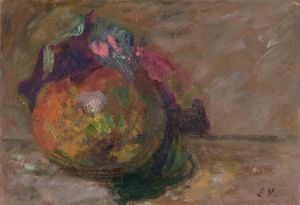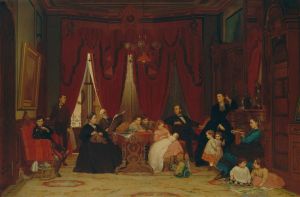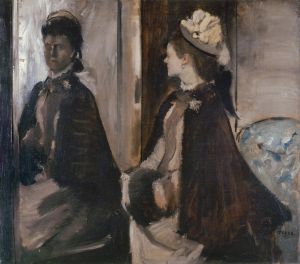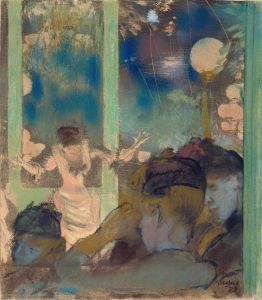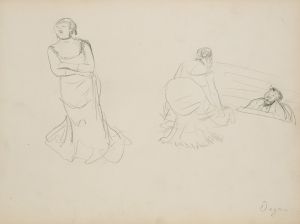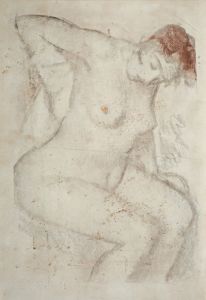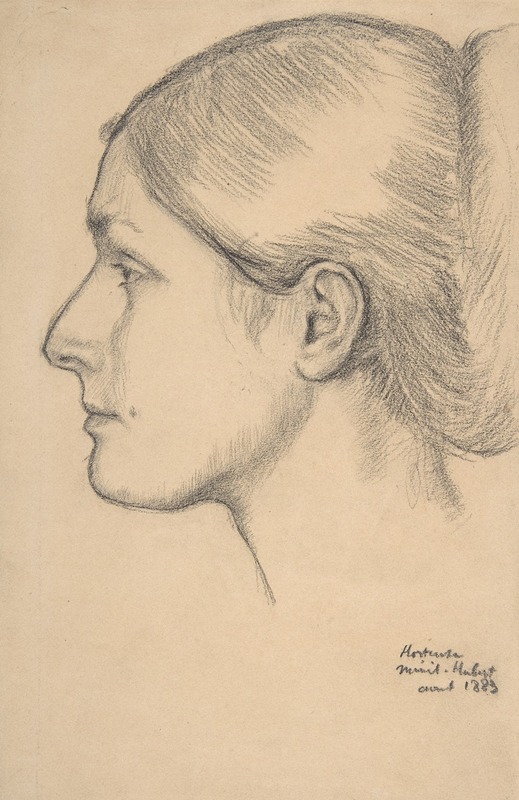
Portrait of Hortense Valpinçon
A hand-painted replica of Edgar Degas’s masterpiece Portrait of Hortense Valpinçon, meticulously crafted by professional artists to capture the true essence of the original. Each piece is created with museum-quality canvas and rare mineral pigments, carefully painted by experienced artists with delicate brushstrokes and rich, layered colors to perfectly recreate the texture of the original artwork. Unlike machine-printed reproductions, this hand-painted version brings the painting to life, infused with the artist’s emotions and skill in every stroke. Whether for personal collection or home decoration, it instantly elevates the artistic atmosphere of any space.
Edgar Degas, a prominent French artist associated with the Impressionist movement, is renowned for his innovative approach to painting, particularly his depictions of dancers, women, and scenes of everyday life. Among his diverse body of work is the painting "Portrait of Hortense Valpinçon," which exemplifies his skill in portraiture and his interest in capturing the subtleties of human expression and form.
Hortense Valpinçon was a member of a family that had a long-standing relationship with Degas. The Valpinçons were significant patrons and friends of the artist, and Degas often visited their home in Normandy. This connection provided him with the opportunity to create several portraits of the family members, including Hortense. The Valpinçon family’s support was crucial to Degas, offering him both financial backing and personal encouragement throughout his career.
The "Portrait of Hortense Valpinçon" is a testament to Degas's ability to convey the inner life of his subjects through his meticulous attention to detail and his innovative use of color and composition. Although Degas is often associated with the Impressionist movement, he diverged from many of his contemporaries by focusing on line and form rather than the effects of light and color. This painting reflects his classical training and his admiration for the Old Masters, as seen in the careful rendering of Hortense's features and the subtle interplay of light and shadow.
In this portrait, Degas captures Hortense in a moment of quiet introspection. Her pose is relaxed, yet there is a sense of poise and dignity in her demeanor. Degas's use of a muted color palette enhances the serene atmosphere of the painting, drawing the viewer's attention to Hortense's expression and the delicate details of her attire. The background is understated, allowing Hortense to remain the focal point of the composition.
Degas's portraits are often noted for their psychological depth, and the "Portrait of Hortense Valpinçon" is no exception. Through his nuanced portrayal, Degas invites the viewer to contemplate the personality and inner world of his subject. The painting is a fine example of Degas's ability to blend traditional portraiture techniques with his own unique artistic vision.
While Degas is primarily celebrated for his depictions of dancers and scenes of modern life, his portraits, such as that of Hortense Valpinçon, reveal another facet of his artistic talent. These works demonstrate his keen observational skills and his commitment to capturing the essence of his subjects, making them an integral part of his oeuvre.
The "Portrait of Hortense Valpinçon" remains an important piece within Degas's body of work, illustrating his mastery of portraiture and his enduring interest in the human condition. Through this painting, Degas not only immortalizes a member of a family dear to him but also contributes to the rich tapestry of 19th-century French art.






